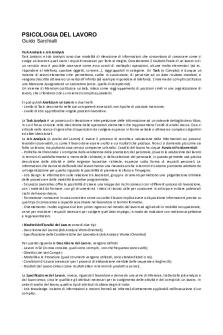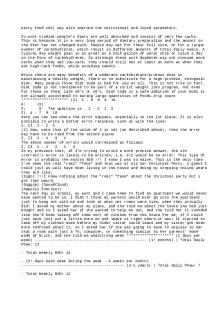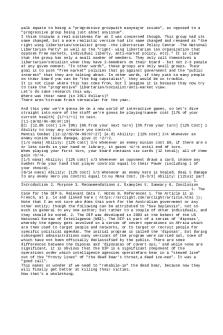Crypt analysis. ( Mirza) PDF

| Title | Crypt analysis. ( Mirza) |
|---|---|
| Author | Alois Kaaria |
| Course | Computer Science III: Systems Programming |
| Institution | American University (USA) |
| Pages | 5 |
| File Size | 65.3 KB |
| File Type | |
| Total Downloads | 13 |
| Total Views | 142 |
Summary
Cheon, J. H., Han, K., Lee, C., Ryu, H., & Stehlé, D. (2015, April). Cryptanalysis of the multilinear map over the integers. In Annual International Conference on the Theory and Applications of Cryptographic Tec
Hu, Y., & Jia, H. (2016, May). Cryptanalysis of GGH map. In Annual International ...
Description
Running head: cryptanalysis
1
Cryptanalysis Name Instructor Date
Cryptanalysis
2
Since the Enigma, we have had many advances in the field of computing and encryption. The code breaking machines invented have helped prove theories regarding data storage and computer programming. We have had the invention of systems like the Desch's solution and others that have not encrypted the Enigma but have been faster and more efficient. Everyone in the world uses encryption in one way or the other. There, however, is a dilemma and lack of a clear path on how encryption is going to be in the future. We, for instance, ask each other Creation of ways to break encryption will weaken the security of systems (Cheon et al, 2015). Organized criminals, state actors and other bad people who have this ability can take advantage and undermine the strength of the security system. The enigma machine set standards that are used in modern-day cryptography Timelines Notable events in cryptography date back to B.C when Sumerians developed cuneiform writing. Their encryption was pen-based. In 1799 AD, however, cryptanalysis led to techniques that broke monoalphabetic cyphers developed in manuscripts. Greece: In 500BC Scytale was developed for communicating secret messages. It was developed by the Spartans. Rome: This is the earliest military used cryptography done by Julius Caesar 2000 years ago. Caesar developed a substitution cipher, that substituted letters to different letters so that only the person who knew about substitution would decipher the code.
Cryptanalysis
3
Alberti-Vigenere Cipher: Leon Battista developed an encryption system with the use of a cipher disk in the mid1400s. A mechanical device developed the encryption system method with sliding disk s that allowed various ways of substituting. This method uses the grid of letters that gave the technique of substitution. Jefferson Wheel Cipher: During the late 1700s, Thomas Jefferson developed a cipher system like Vigenere cipher and with higher security. War Driven Cryptography – WWI: During this world war I, they developed two cryptography methods like Zimmerman telegram Choctaw Codetalkers War Driven Cryptography (WWII): During the world war -II, they developed a cryptographic method like, Enigma the Encryption machine: During the end of world war I, the Enigma have invented a device that uses the device for encrypting and decrypting secret messages. This Enigma uses the gears and rotors that allow up to 10114 possible configurations, which makes it virtually unhackable with brute-forcing methods.
Cryptanalysis
4
Some point we can learn and apply from the enigma machine in the modern world of security can be stated as follows. As security experts, people should not dwell too much from their technical supremacy. A cryptanalytic attack is possible(Hu et al, 2016). The Nazis believed their system was uncheckable and powerful. However, the allies created machine powerful enough to analyses the machine settings and cracking the code, thus deciphering the message. We can also observe that it is challenging to predict weak links in well-protected information. We also learn that it is essential to take the opportunity of making keys more sophisticated by adding more. A single character may increase the time it takes to crack a password. For instance, in the Enigma, additional rotors in the naval made it hard for the allies to crack the password. From the Enigma, we note that human factors play important roles when it comes to dealing with sophisticated systems. We are not sure whether the allies would have been break the Enigma were it not for the tiny errors by the German operators. We also note that having information supremacy acts as a double-edged sword. The allies command had a challenging task of how he would use the deciphered messages. We live in the catch-22 era of computerized encryption. People have not yet agreed on the right time to break encryption. Controversies arise since coming up with a way to break the encryption means that strong security will be weakened.
Cryptanalysis
5
References Cheon, J. H., Han, K., Lee, C., Ryu, H., & Stehlé, D. (2015, April). Cryptanalysis of the multilinear map over the integers. In Annual International Conference on the Theory and Applications of Cryptographic Tec Hu, Y., & Jia, H. (2016, May). Cryptanalysis of GGH map. In Annual International Conference on the Theory and Applications of Cryptographic Techniques (pp. 537-565). Springer, Berlin, Heidelberg. hniques (pp. 3-12). Springer, Berlin, Heidelberg....
Similar Free PDFs

Crypt analysis. ( Mirza)
- 5 Pages

Tugas Resume Hadi Mirza
- 147 Pages

Task Analysis e Job Analysis
- 3 Pages
Popular Institutions
- Tinajero National High School - Annex
- Politeknik Caltex Riau
- Yokohama City University
- SGT University
- University of Al-Qadisiyah
- Divine Word College of Vigan
- Techniek College Rotterdam
- Universidade de Santiago
- Universiti Teknologi MARA Cawangan Johor Kampus Pasir Gudang
- Poltekkes Kemenkes Yogyakarta
- Baguio City National High School
- Colegio san marcos
- preparatoria uno
- Centro de Bachillerato Tecnológico Industrial y de Servicios No. 107
- Dalian Maritime University
- Quang Trung Secondary School
- Colegio Tecnológico en Informática
- Corporación Regional de Educación Superior
- Grupo CEDVA
- Dar Al Uloom University
- Centro de Estudios Preuniversitarios de la Universidad Nacional de Ingeniería
- 上智大学
- Aakash International School, Nuna Majara
- San Felipe Neri Catholic School
- Kang Chiao International School - New Taipei City
- Misamis Occidental National High School
- Institución Educativa Escuela Normal Juan Ladrilleros
- Kolehiyo ng Pantukan
- Batanes State College
- Instituto Continental
- Sekolah Menengah Kejuruan Kesehatan Kaltara (Tarakan)
- Colegio de La Inmaculada Concepcion - Cebu












